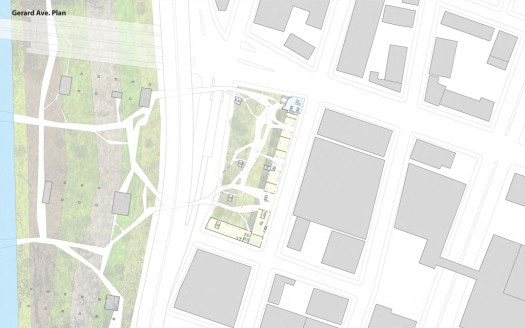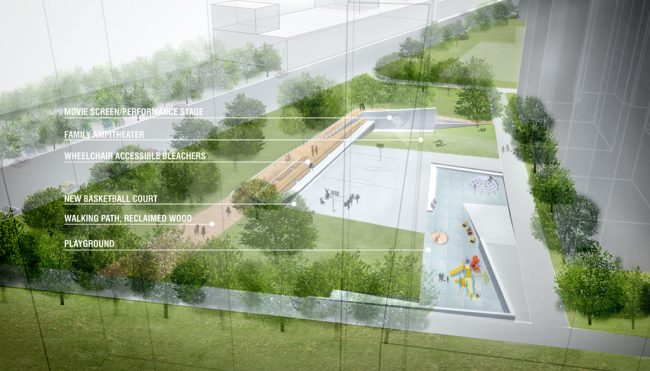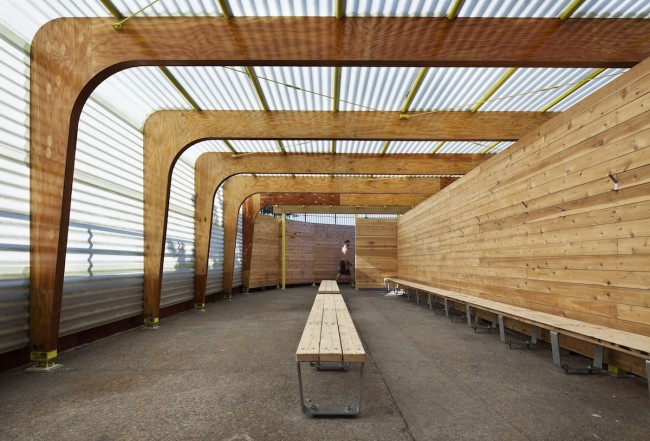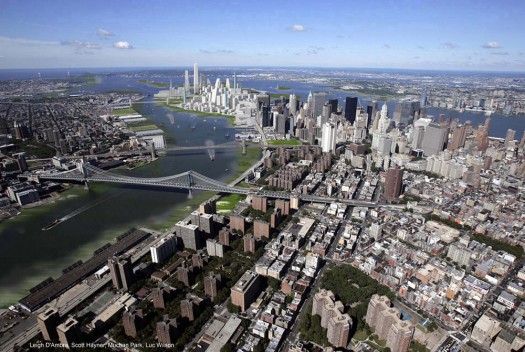
We are celebrating 15 years — and counting — of stories that are deeply researched and deeply felt, that build a historical record of what the city has been.
We are celebrating 15 years — and counting — of stories that are deeply researched and deeply felt, that build a historical record of what the city has been.
To mark the fifth anniversary of the launch of Urban Omnibus, we look at themes that have emerged in our content over time and think about what those threads reveal about the needs, desires, and priorities of the city today.
The studio is often considered the foundation of design pedagogy. Students are tasked with a brief, a problem to solve or concept to explore, and the intensity with which they approach it often produces incredibly rich ideas. But far too often this intellectual production never moves beyond the pin-up, lost in the shuffle from semester to semester, left within a university’s walls. Urban Omnibus launched its studio report series in 2010 to combat this loss and to broadcast some of the design schemes that students create beyond the academic realm. And while the studio may be primarily associated with architecture, interdisciplinary collaborations prove especially promising for confronting challenges of the built environment.

Site analysis revealing the current flooding of the NYC sewer system during a storm surge prompted a proposal in the Bronx Lower Concourse Housing studio for a model building with constructed wetlands at the ground level that treat sewage and rainwater and provide public space. | Project by Rahul Shah and Yoseff Ben-Yehuda
Intriguing and sometimes fantastical renderings are often what do enter the wider world from design studios, if anything. But serious research into context, history, and policy often support these visuals. The Bronx Lower Concourse Housing studio, a Design Studio II course for Masters in Architecture students at Parsons, used a proposed rezoning intended to expand residential development in a largely industrial area as the platform from which to explore the contemporary dwelling. The studio investigated the influence of culture, technology, history, and policy on the home, all within the framework of an existing policy discussion grounded in place.
A Michigan architecture studio approached a similarly timely issue: that of reimagining towers-in-the-park developments to integrate them with the city more effectively, while creating additional housing units and community infrastructure in an increasingly built-out city. The relevance of the studio is clear: many of the design ideas brought forth by students resemble those that informed a recent NYCHA proposal to lease open space in eight of its developments for residential construction — read more in Sarika Bansal’s piece on Smith Houses’ residents organizing against the plan and other pieces in our Typecast project.

A family entertainment playground that utilizes reappropriated wood and features wheelchair-accessible bleachers and amphitheater in “Ramp it Up,” a proposal in the Harvard GSD studio The Good Old Days | Project by Katie Chu
And while the Michigan studio focused largely on many of the acknowledged drawbacks of towers-in-the-park, Dan D’Oca — who, along with his partners at Interboro, explored the ways the typology actually serves senior citizens’ needs surprisingly well as Naturally Occurring Retirement Communities (NORCs) —challenged his studio at the Harvard Graduate School of Design to expand on this existing asset by coming up with ways to improve seniors’ comfort, mobility, safety, and happiness as they age in place.
Envisioning such interventions is only one step in the process for design/build studios, which emphasize the making and installation of a designed project, not just its conception. According to Alfred Zollinger, the director of Parsons’ Design Workshop, this process provides an opportunity for students to “apply your design ideas in a direct way that forces a balance between concepts and practical requirements.” Zollinger sees the concept of making as an important mode of critical inquiry in the Workshop’s projects to create community facilities at Highbridge Pool in Washington Heights.

The Splash House changing rooms at Highbridge Pool, designed and built by Parsons Design Workshop students | Photo by Michael Moran
Many studios are inherently future-oriented, charged with conceiving of how to grapple with a changing world and its uncertainties, and lack the possibility for implementation that a design/build approach demands. The Crisis Fronts degree project seminar and studio at Pratt Institute focuses on the intersection of public policy and speculative design thinking and methodologies to produce design scenarios for the near to distant future of the city. Last year, the studio took on the Bronx from the urban scale, tackling questions of density, demographics, food distribution, and cultural production. Creating visions of a dynamic future for Jamaica Bay that embrace ecological change within the context of urbanism — and, in the process, engaging questions of the changing nature of architecture, landscape architecture, and planning — was at the heart of a recent studio at Harvard led by Chris Reed. And speculation, in both a design and real estate sense, guided a joint studio of architecture and real estate students at Columbia to propose schemes for developing Governors Island to serve the city’s future. Notably, the project “LoLo,” which suggested connecting the island to Lower Manhattan with landfill to create a sixth borough (and ample space for development), had legs far beyond the studio, sparking discussions in the media and within government agencies.

View of Manhattan looking south in “The Future History of New York City,” which proposed linking Governors Island to Lower Manhattan with landfill | Proposal by Muchan Park, Luc Wilson, Leigh D’ambra, and Scott Hayner
Such a cross-disciplinary approach also informed a 2009 Parsons studio, which paired architecture and lighting design students to reconsider the jumble of conditions that converge at the 79th Street Boat Basin, from circulatory systems — highway, train, street grid, bike path, and walk way — to recreation and the surrounding neighborhood’s mix of housing and retail.
While still working with architecture, urban design, and urban planning students, Montage City, a workshop taught by UO Editor Cassim Shepard, approaches the studio from a different angle. Instead of diagrams and renderings, students use cinematic strategies of interpreting place to investigate the neighborhoods of New York. And while mapping is often one component of the traditional architecture studio, Louise Harpman took it as the means and subject of investigation for her course at NYU’s Gallatin School, in the process teaching design skills as well as key theoretical concepts in sustainability and urbanism.
The views expressed here are those of the authors only and do not reflect the position of The Architectural League of New York.